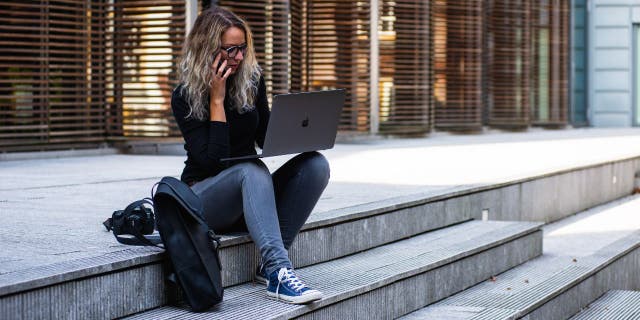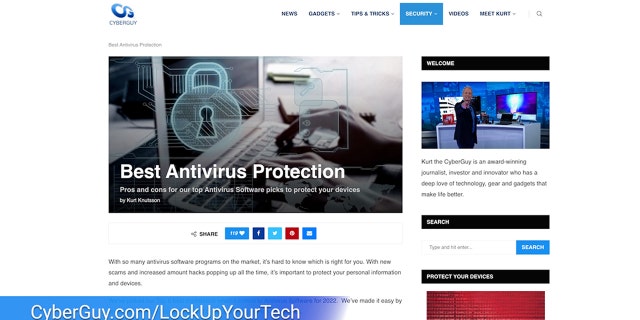
Those who use Apple devices are being targeted once again with the latest phishing email scam. This is not the first time hackers are trying to get your personal information. However, they’re always coming up with new tricks, and you must know how to protect yourself.
CLICK TO GET KURT’S CYBERGUY NEWSLETTER WITH QUICK TIPS, TECH REVIEWS, SECURITY ALERTS AND EASY HOW-TO’S TO MAKE YOU SMARTER
What is the latest Apple phishing scam?
With this particular phishing scam, tons using Apple products have been receiving emails claiming to be from iCloud Support. These phishing emails will typically tell you some false information about your iCloud account being compromised and will ask you to click a link immediately to change your Apple ID and password.
The link will then lead you to a website that looks like Apple Support’s official website and ask you to start adding in your personal information. Once the hackers have that information, they can expose your entire digital life and get pretty much any information they want on you.

Woman on laptop while sitting on the steps (Cyberguy.com)
IS AN AIRTAG DANGEROUS TO YOUR DOG?
What really happens if I hand over my Apple ID and password?
If you’re an Apple user, you’re aware that your iCloud account is used to back up all your files and is guarded with your Apple ID and password. However, what you may not realize is just how much information is stored within your Apple ID, which is exactly why these hackers want you to hand it over to them.
Your Apple ID is what allows you to access everything from your personal iCloud Photo Library to your Notes app and even files stored in iCloud Drive. It also gives access to Find My, which would allow hackers to figure out the location of all your devices and potentially your family’s devices as well.
Caution Using Apple Pay
If you use Apple Pay, your Apple ID would give them access to your debit and credit card information too. And probably worst of all, they can remotely wipe any of your devices, intercept your iMessage and SMS messages, and get at everything in your iCloud Backups including your call history, web browsing history, and more.

Woman typing on the laptop (Cyberguy.com)
FREE ANTIVIRUS: SHOULD YOU USE IT?
How do I protect myself?
The most important step you can take to protect yourself is to never open any suspicious-looking emails or click any links sent to you. You should always be double-checking the email address of any message you’ve received, as you may notice that the email address has an extra letter, a capital letter that doesn’t belong, or a random symbol within it.
Have good antivirus software on all your devices
Even if you do take these steps, however, it’s possible to miss something because these hackers can be super clever. That’s why you should also consider installing antivirus software on all your devices. Antivirus software will protect you from accidentally clicking malicious links and will remove any malware from your devices.
See my expert review of the best antivirus protection for your Windows, Mac, Android & iOS devices by searching ‘Best Antivirus’ at CyberGuy.com by clicking the magnifying glass icon at the top of my website.
Enable 2-factor authentication
I would also strongly recommend enabling 2-factor authentication with your Apple ID. This would require anyone trying to access your Apple ID to enter a 6-digit verification code along with your password. The code gets sent to your iPhone or iPad, so unless the hacker has those devices in their possession, then they’re way less likely to be able to get into your account.

Woman on Mac Desktop (Cyberguy.com)
HOW TO SCAN A QR CODE SAFELY USING YOUR SMARTPHONE
To enable 2-factor authentication for your Apple ID, follow these steps:
- On your iPhone, iPad, or iPod touch, go to Settings
- Tap on your Name under the search window
- Tap on Password & Security
- Tap Turn On Two-Factor Authentication
- Follow the onscreen instructions to set up two-factor authentication
- You’ll be asked to provide a trusted phone number where Apple can send verification codes when you sign in on a new device or browser
- You’ll also need to set up a trusted device, such as your iPhone or iPad, that can receive verification codes
- After you’ve set up two-factor authentication, you’ll need to enter your Apple ID password and a verification code when you log in to iCloud or make a purchase on a new device or browser

Best antivirus protection to protect your computer (Cyberguy.com)
CLICK HERE TO GET THE FOX NEWS APP
Stay vigilant and take necessary precautions to safeguard your personal information while using your Apple devices to avoid falling victim to these malicious iCloud phishing email scams. Have you been seeing any iCloud phishing email scams? Let us know how you handled it.
For more of my tips, subscribe to my free CyberGuy Report Newsletter by clicking the “Free newsletter” link at the top of my website.
Copyright 2023 CyberGuy.com. All rights reserved.

 Latest Breaking News Online News Portal
Latest Breaking News Online News Portal




